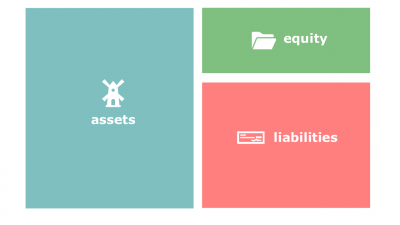Difference between revisions of "Basic accounting equation"
(Created page with "Basic accounting equation (alternatively known as byby; hereinafter, the ''byby'') is . ==Definitions== According to College Accounting: A Practical Approach by Sl...") |
|||
| Line 1: | Line 1: | ||
| − | [[Basic accounting equation]] ( | + | [[File:Books.png|400px|thumb|right|[[Double-entry bookkeeping]]]][[Basic accounting equation]] (or, simply, [[accounting equation]]; hereinafter, the ''byby'') is [[Assets]] = [[Liabilities]] + [[Owner's equity]]. |
==Definitions== | ==Definitions== | ||
According to [[College Accounting: A Practical Approach by Slater (13th edition)]], | According to [[College Accounting: A Practical Approach by Slater (13th edition)]], | ||
| − | :[[Basic accounting equation]]. | + | :[[Basic accounting equation]]. [[Assets]] = [[Liabilities]] + [[Owner's equity]]. |
==Related concepts== | ==Related concepts== | ||
Revision as of 14:00, 17 December 2018
Basic accounting equation (or, simply, accounting equation; hereinafter, the byby) is Assets = Liabilities + Owner's equity.
Definitions
According to College Accounting: A Practical Approach by Slater (13th edition),
Related concepts
- Bookkeeping. Recording, filing, and retrieving of financial data, as well as producing those financial reports that are required by laws.
